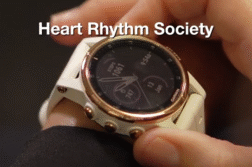COLUMBUS, Ohio (Ivanhoe Newswire) – Diastolic heart failure happens when the left ventricle, or the pumping chamber of a person’s heart becomes stiff, and blood can’t flow from the heart into the lungs. Now, for the first time, doctors are testing a tiny device designed to relieve the pressure and give patients back their lives.
Yardwork makes Cecil Hamilton happy because until very recently, it was impossible – his legs would hurt and he was constantly out of breath.
Hamilton had diastolic heart failure, or DHF. The pumping chamber of his heart was stiff.
“You can imagine it as the heart becomes more of a copper pipe than a water balloon,” interventional cardiologist at the Ohio State Wexner Medical Center, Scott Lilly, MD says.
Hamilton was hospitalized regularly for years, but a visit from the oldest of his eight grandchildren strengthened his resolve to get healthy.
“She was scared to death. I said, ‘Then, I gotta do something. I don’t know what, but something. I don’t want to see that look in my granddaughter’s eyes again.,” Hamilton expresses.
That something was a small device. Hamilton’s doctors asked him to take part in a randomized trial of a new device. In some patients, doctors threaded a catheter through the leg into the heart to create a small path between the upper chambers. Then doctors implanted the dime-sized device called an inter-atrial shunt.
Dr. Lilly explains, “That valve allows the blood to go from the left side to the right side. Presumptively reduces the amount of congestion in the lungs.”
While Hamilton didn’t know for sure that he received the device, he could breathe better as soon as he woke up.
“Three, four days afterwards, I knew that I had it because I could tell a difference,” Hamilton exclaims.
He’s now back to driving a bus for Ohio State’s sports teams, bowling with his grandchildren, and getting his yard ready for another spring season.
Cecil Hamilton’s doctors have since confirmed that he did receive the interatrial shunt device, which is designed to stay in place in a patient’s heart permanently. A phase three clinical trial is underway to confirm earlier findings that showed patients improved with the device, and then the FDA will consider it for approval.
Contributors to this news report include: Cyndy McGrath, Producer; Kirk Manson, Videographer; Roque Correa, Editor.
To receive a free weekly e-mail on medical breakthroughs from Ivanhoe, sign up at: http://www.ivanhoe.com/ftk
MEDICAL BREAKTHROUGHS
RESEARCH SUMMARY
TOPIC: DIASTOLIC HEART FAILURE: TRIAL PUTS NOVEL DEVICE TO THE TEST
REPORT: MB #5186
BACKGROUND: Diastolic heart failure is also known as heart failure with preserved ejection fraction, is a type of heart failure where the heart muscle is still able to pump blood effectively out of the ventricles during each heartbeat, but the ventricles are unable to relax and fill properly with blood between beats. This leads to a buildup of pressure in the left ventricle and can result in symptoms such as shortness of breath, fatigue, and fluid buildup in the legs and lungs. This type of heart failure is a type of left sided heart failure. Heart failure affects around 6.2 million people in the United States.
(Source:
https://www.cdc.gov/heartdisease/heart_failure.htm
DIAGNOSING: Risk factors for diastolic heart failure include age, high blood pressure, obesity, and diabetes. It is also more common in women than in men. The exact cause of diastolic heart failure is not yet fully understood, but it is thought to be due to changes in the structure and function of the heart muscle, as well as the blood vessels and other tissues that support the heart. Diagnosis of diastolic heart failure involves a thorough medical history, physical examination, and a variety of tests, including an electrocardiogram, echocardiogram, and chest X-ray. Diastolic heart failure symptoms can include atrial fibrillation, coronary artery disease, diabetes, high blood pressure, sleep apnea, obesity, and kidney diseases.
(Source:
NEW TECHNOLOGY: A new device called an interatrial shunt device is being used to treat diastolic heart failure. This device is designed to permanently stay in a patient’s heart. The valve placed inside the heart creates an access way for blood to move from the left to right sides. This significantly reduces the congestion inside the lungs. The FDA is considering further treatment from the interatrial shunt device as it is in a phase three clinical trial to evaluate further treatments. The device brings hope to patients that previously had limited treatment options for their condition.
(Source:
FOR MORE INFORMATION ON THIS REPORT, PLEASE CONTACT:
Amy Colgan
If this story or any other Ivanhoe story has impacted your life or prompted you or someone you know to seek or change treatments, please let us know by contacting Marjorie Bekaert Thomas at mthomas@ivanhoe.com




